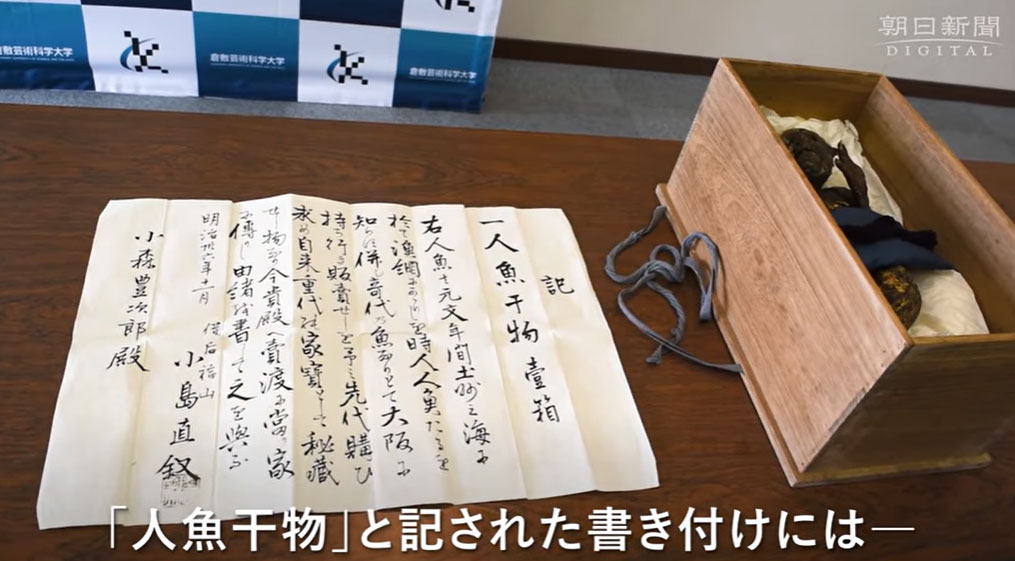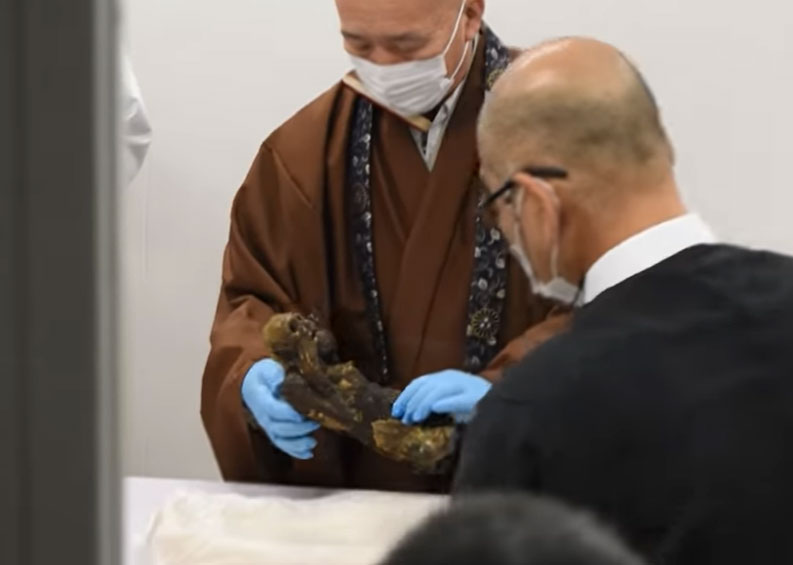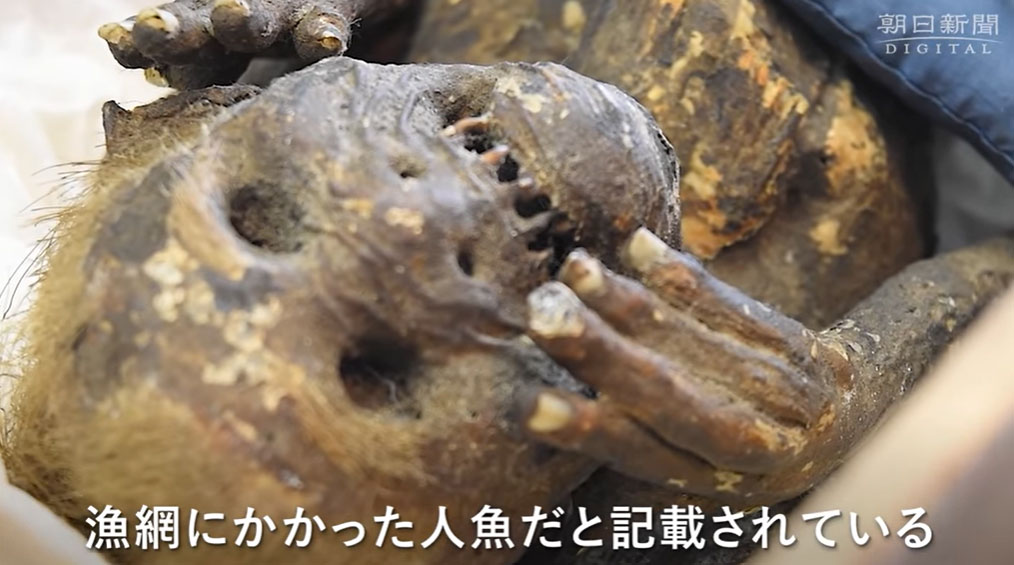Scientists have studied in greater depth a gruesome mummified “mermaid” that could be more than 200 years old — only to find out that its component parts made out of different bits and pieces of biological animal parts are weirder then previously thought, new findings showed.
Researchers first discovered the mermaid in 2022, lying inside a sealed wooden box within a Japanese temple in Okayama Prefecture, according to Asahi Shimbun.
The preserved specimen is about 12 inches (30.5cm) long.
It had previously been displayed in a glass case at the temple for people to worship.
It was then stored away more than 40 years ago.
However, a letter inside the mummy’s box claimed that the creature was caught by a fisherman sometime between 1736 and 1741.

Without much clues on its origins, researchers guessed that it was made from the torso and head of a monkey sewed onto a decapitated fish’s body.
The mermaid-like entity resembles a Ningyo from Japanese mythology — a fish-like creature with a human head.
The Ningyo is believed to help cure disease and increase longevity.
This specimen was likely created decades after the supposed date of it haul from the sea as a hoax to sell to the rich looking to improve health and longevity.
New findings show creature weirder than expected
Researchers from the Kurashiki University of Science and the Arts (KUSA) in Japan got hold of the mermaid in early February 2022, with permission from the temple’s priests, LiveScience reported.

Modern electron microscopy and DNA analysis were used, as well as X-ray and CT (computerised tomography) were employed to scan and radiocarbon date the artifact.
A year later, on Feb. 7, 2023, the team finally released its findings: The mermaid was even more bizarre than anticipated.
Different animal parts
The results showed that the mermaid’s torso was made predominantly from cloth, paper and cotton that was held together by metal pins running from the neck to lower back, ScienceAlert reported.
It was not made from a monkey.

A paste made from a mix of sand and charcoal was painted onto the body.
But there were other animal parts involved.
The torso was covered in mammal hair and fish skin, likely from a pufferfish.
These material also covered parts of the arms, shoulders, neck and cheeks.
Radiocarbon dating of the scales indicated they could date back as far as the early 1800s.
The mermaid’s jaw and teeth were probably taken from a predatory fish.
Its claws were made from keratin, derived from a real but unidentifiable animal.
The lower half of the mermaid did come from a a species of croaker — a ray-finned fish that makes a croaking sound.
The researchers were not able to identify any complete DNA.